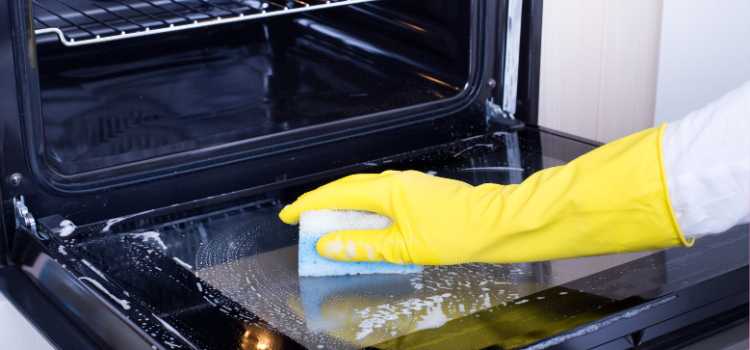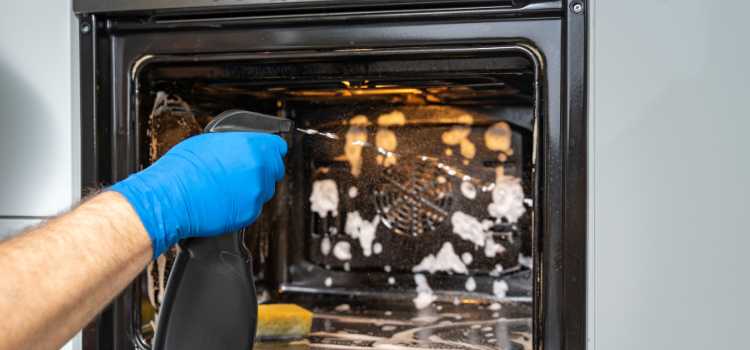As an Amazon Associate, I earn from qualifying purchases

Oven cleaner, a household staple, is primarily used for tackling the tough grime and baked-on grease that accumulates in ovens. Its powerful cleaning properties make it an essential tool for maintaining kitchen cleanliness. However, its strength has led to curiosity about its potential for other applications, such as removing paint.
This curiosity stems from the desire to find efficient, albeit unconventional, solutions for challenging tasks. The question then arises: Can an oven cleaner, with its potent formula, effectively remove paint?
Chemical Composition of Oven Cleaners
The effectiveness of oven cleaner lies in its robust chemical composition. At the core of many oven cleaners is sodium hydroxide, commonly known as lye. This caustic agent is known for its ability to break down organic matter, making it ideal for cleaning stubborn, greasy residues. In addition to lye, other caustic agents and solvents are often present, enhancing the cleaner’s ability to penetrate and lift tough stains.
These chemicals work by breaking down the molecular bonds of substances like grease, allowing them to be wiped away easily. The same principle theoretically applies to paint, which is why some consider using oven cleaner for this purpose. However, the interaction between these chemicals and paint can vary based on the paint type and surface.
Interaction with Paint
Oven cleaner’s interaction with paint is dependent on the paint’s composition. Different types of paint, including acrylic, latex, and oil-based, have varying levels of resistance to chemical breakdown. Acrylic and latex paints are generally more susceptible to chemical agents like those in oven cleaners, which can soften or even dissolve the paint, making it easier to remove.
Oil-based paints, however, are more resilient due to their composition, requiring more potent chemicals or longer exposure times.
The mechanism of paint removal involves the oven cleaner penetrating the paint layer and disrupting its adhesion to the substrate. This process can be effective but is not without risks, particularly concerning the surface beneath the paint.
Safety Considerations
Handling oven cleaner requires caution due to its caustic nature. Protective gear, such as gloves, goggles, and masks, is essential to prevent skin irritation, eye injuries, and inhalation of harmful fumes. Moreover, the effectiveness of oven cleaner in paint removal raises concerns about environmental safety and the potential for damaging the underlying surface, especially if it’s delicate or porous.
Proper ventilation is crucial when using oven cleaner indoors to mitigate the risk of inhaling hazardous fumes. Additionally, testing the cleaner on a small, inconspicuous area before full application can help assess its impact on both the paint and the surface.
Step-by-Step Instructions for Using Oven Cleaner to Remove Paint

- Preparing the Area: Before applying oven cleaner, protect the surrounding area with drop cloths or plastic sheeting to prevent accidental damage. Gather necessary materials, including protective gear, a scraper, and cleaning cloths.
- Application Process: Spray or apply the oven cleaner evenly over the painted surface. Allow it to sit for the recommended time, usually 15 to 30 minutes, depending on the paint’s resistance.
- Waiting Period and Monitoring: During this time, monitor the paint’s reaction. If the paint begins to bubble or peel, it’s a sign that the cleaner is working.
- Removal and Clean Up: Use a scraper to gently lift the paint away from the surface. Wipe the area clean with damp cloths to remove any residue and neutralize the cleaner with a vinegar or water solution if necessary.
Alternative Paint Removal Methods
For those seeking more traditional approaches, methods like sanding, scraping, and using heat guns are viable options. These techniques are often safer for the environment and the surface but may require more physical effort and time.
Chemical paint strippers are another alternative, designed specifically for paint removal. They tend to be more effective and safer than oven cleaners, as they are formulated with the appropriate balance of chemicals for stripping paint without damaging surfaces.
Potential Risks and Precautions
The use of oven cleaner for paint removal presents several risks. It can damage certain surfaces, especially if left on too long or not neutralized properly. Health hazards from inhalation or skin contact are also concerns. To minimize risks, always use protective gear, ensure adequate ventilation, and follow manufacturer instructions closely. Testing on a small area is crucial to avoid unintentional damage.
Conclusion
While oven cleaner’s powerful formula can potentially remove paint, it is not without its challenges and risks. Understanding the chemical interaction with different paint types and taking necessary safety precautions is essential. Alternative methods, specifically designed for paint removal, may offer safer and more reliable results.
Ultimately, the decision to use oven cleaner should weigh the pros and cons, considering both effectiveness and safety. For those prioritizing gentler, more predictable outcomes, traditional paint removal techniques or specialized strippers might be the better choice.
FAQ
How long does oven cleaner take to remove paint?
Oven cleaner typically takes 15 to 30 minutes to start removing paint, depending on the paint type and thickness. Monitor the process closely to avoid damage to the underlying surface, and ensure proper ventilation and safety precautions during this period.
Does oven cleaner really strip paint?
Yes, oven cleaner can strip paint, especially if it’s acrylic or latex. The caustic chemicals in oven cleaners break down paint adhesion, making it easier to remove. However, effectiveness may vary based on paint type and surface, so proceed with caution and perform a patch test first.
How to use oven cleaner to take off paint?
To use oven cleaner for paint removal, apply it evenly on the painted surface. Allow it to sit for 15 to 30 minutes, then gently scrape off softened paint with a scraper. Clean the area thoroughly with water to neutralize any remaining cleaner, ensuring proper ventilation and safety gear throughout.
What does oven cleaner do to car paint?
Oven cleaner can severely damage car paint by causing it to bubble, peel, or discolor due to its harsh chemicals. It is not recommended for use on vehicles. Instead, use products specifically designed for automotive paint care to avoid costly repairs or irreversible damage.
As an Amazon Associate, I earn from qualifying purchases